Mitsubishi Thermostat Symbols Meaning Explained
Want to know what those symbols on your Mitsubishi thermostat actually mean? You’re not alone! Understanding Mitsubishi thermostat symbols is important for effectively controlling the temperature and keeping your space comfortable.
In this guide, we’ll explain the meaning of each of those symbols on a Mitsubishi thermostat.
symbols. ( Please take time to see a thermostat symbols chart at the bottom of this guide for more symbols and meaning)
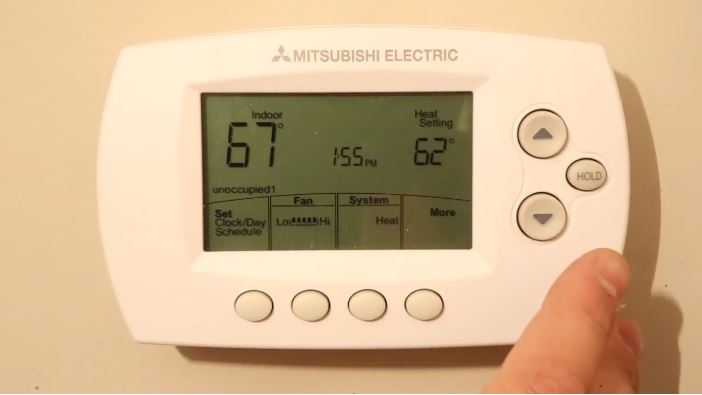
List of Mitsubishi Thermostat Symbols & Their Meanings
Cooling( Ice symbol or snowflake Icon)
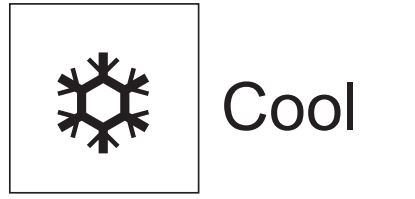
The snowflake symbol on a Mitsubishi thermostat typically represents the air conditioning or cooling mode. #
It is used to indicate that the thermostat is controlling the cooling function and working to lower the temperature in your space.
When you select the cooling mode and set a desired temperature, the thermostat will activate the air conditioning system to provide a comfortable and cool environment.
The snowflake symbol serves as a visual indicator that the thermostat is in cooling mode.
Read also: Honeywell symbols and their meaning
Sun Symbol (Heat)
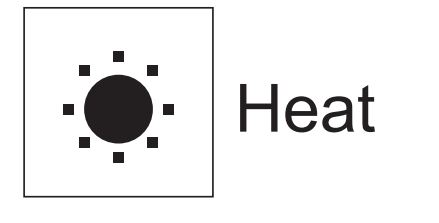
The sun symbol on a Mitsubishi thermostat represents the heating mode. It typically resembles a small sun icon.
When you select the heating mode and set a desired temperature, the thermostat will activate the heating system to warm your space.
The sun symbol is used to indicate that the thermostat is controlling the heating function and working to reach the desired temperature.
Read also: Common Fujitsu thermostat symbols
Looping Arrows (Auto mode)
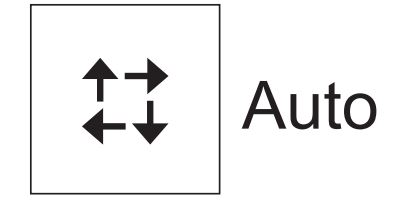
The looping arrows on a Mitsubishi thermostat represents the auto mode.
When you select the auto mode, the thermostat will automatically adjust the temperature and fan speed based on the current conditions and your desired temperature setting.
The auto mode allows the thermostat to automatically switch between heating and cooling as needed to maintain the desired temperature.
It also adjusts the fan speed accordingly for optimal comfort and energy efficiency.
The auto symbol indicates that the thermostat is in automatic mode, taking control of temperature regulation and fan operation to provide an ideal indoor climate.
Read also: Nest thermostat symbols with their meaning
Teardrop or water drop symbol (Dehumidification)
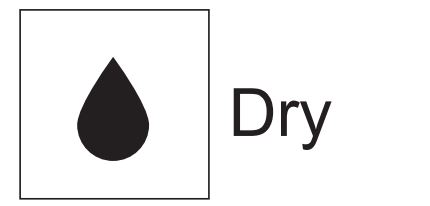
The teardrop or water symbol on a Mitsubishi thermostat typically represents the dehumidification mode. It resembles a small teardrop or water droplet icon.
When you select the dehumidification mode, the thermostat will activate the system to remove excess moisture from the air without significantly cooling or heating the space.
This mode is useful in humid climates or during seasons when humidity levels are high.
The teardrop or water symbol indicates that the thermostat is controlling the dehumidification function to create a more comfortable indoor environment by reducing excessive humidity.
Fan blade symbol (Fan only)

The fan only mode allows the unit to operate solely as a fan. It doesn’t provide heating or cooling functions but circulates the air in the room.
The airflow may feel refreshing, similar to the effect of a ceiling fan. The evaporation of body sweat can create a slightly cool sensation.
To control the indoor fan speed, use the FAN button. Pressing the button will increase the fan speed, as indicated by the fan symbol on the remote screen.
Most units offer at least three manual fan speeds, while newer models may provide up to five speeds for more precise airflow control.
Read also: Caution symbol on Honeywell thermostat meaning
Thermostat symbols chart and meaning
Here are the different thermostat symbols and their meeaning for different makes.
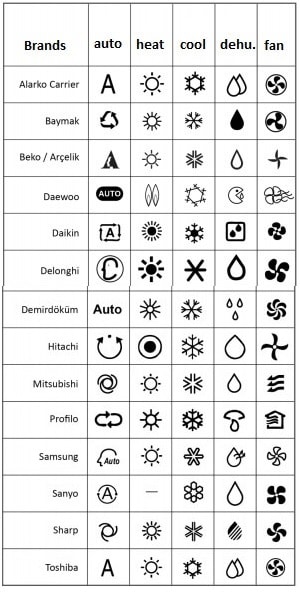
FAQ
Are there any energy-saving features on my Mitsubishi thermostat?
Yes, Mitsubishi thermostats often offer energy-saving features such as timers. This function helps to maintain the indoor temperature at the required level. Even if the temperature setting is changed during operation, the set temperature automatically returns to the originally preset temperature after certain amount of time.
Final thoughts
Now that you’ve got a handle on those Mitsubishi thermostat symbols, I hope there will be no more guessing games or confusion.
With this guide, you can confidently tweak the temperature, switch thermostat modes.
If you have any more questions or clarification reach out to me on [email protected] or refer to mitsubishi thermostat manual for your specific model.